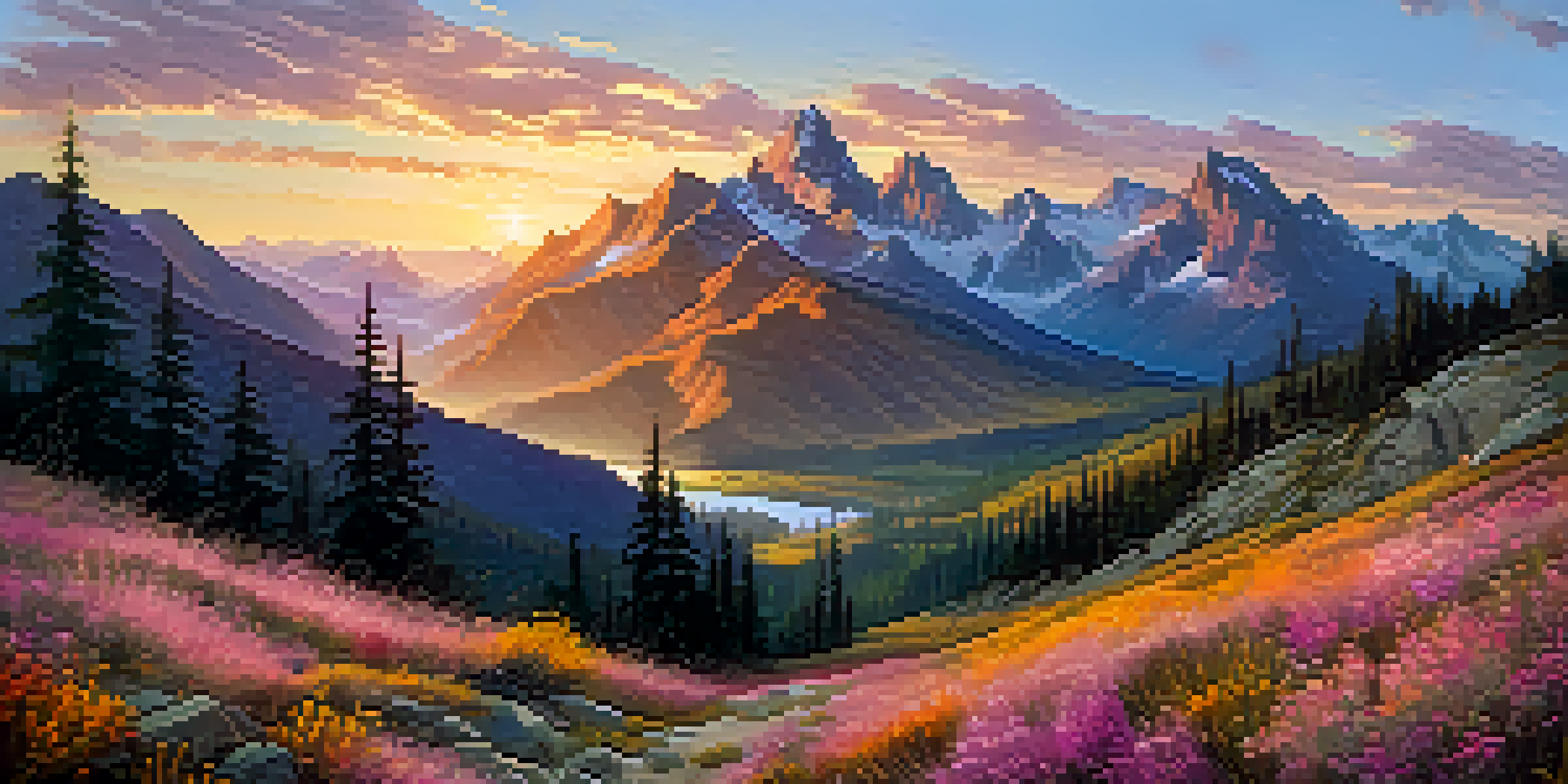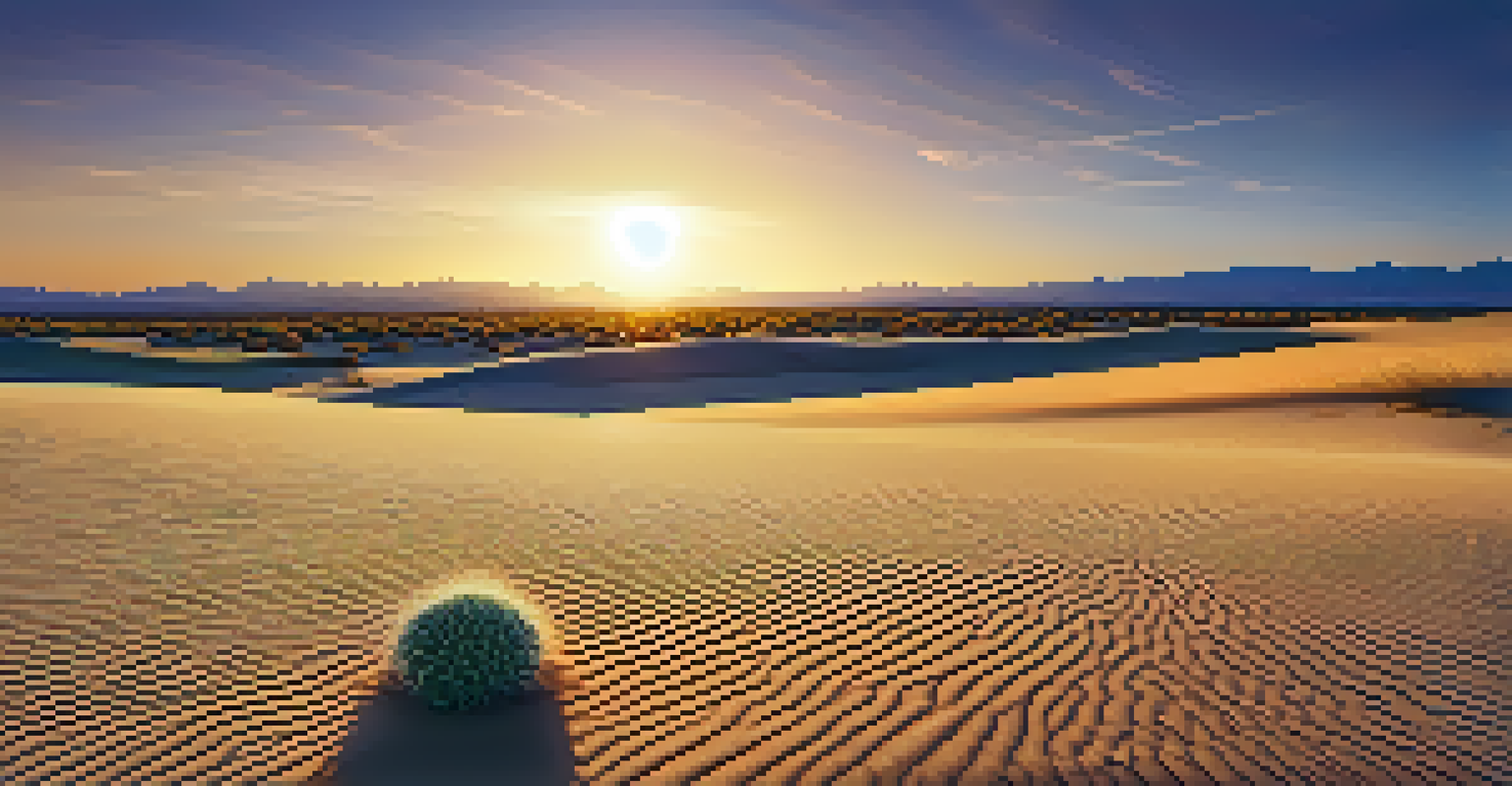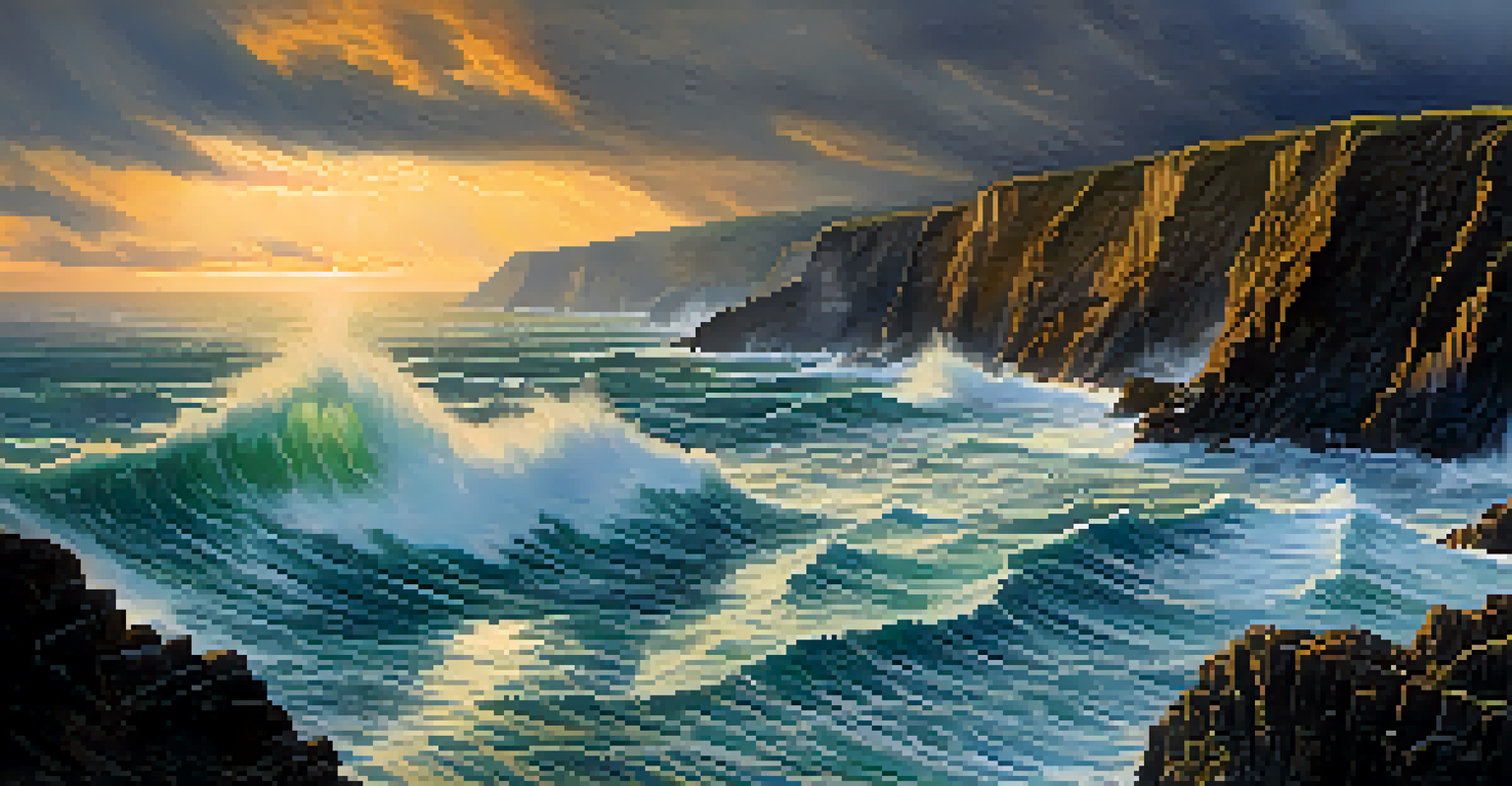Adventurous Photography: Documenting Extreme Landscapes Safely

Understanding the Allure of Extreme Landscapes
Extreme landscapes, like rugged mountains or vast deserts, offer photographers breathtaking opportunities. The play of light, unique textures, and dramatic colors can create stunning images that captivate viewers. However, the beauty of these locations often comes with hidden dangers, making it crucial to approach them with respect and preparation.
In every walk with nature one receives far more than he seeks.
Think of it like a thrilling adventure movie; the scenery sets the stage for an epic tale. But, just as the protagonist must navigate challenges, photographers must be aware of their surroundings and the potential hazards present. Whether it’s unpredictable weather or challenging terrain, each extreme landscape tells its own story, requiring us to be both creative and cautious.
By understanding the allure and the risks, photographers can better appreciate the landscapes they aim to capture. This awareness not only enhances creativity but also fosters a deeper connection with nature. Ultimately, it's about finding the balance between adventure and safety.
Essential Gear for Extreme Landscape Photography
Having the right gear is paramount when venturing into extreme landscapes. A sturdy camera, a versatile lens, and a durable tripod are just the beginning. Consider also packing protective gear such as weatherproof bags and filters to safeguard your equipment from the elements, ensuring that you can shoot no matter the conditions.

Additionally, a good pair of hiking boots and appropriate clothing can make all the difference. Think of your gear as your trusted companions on this journey; they should enhance your experience while ensuring your safety. By investing in quality equipment and clothing, you empower yourself to focus on capturing stunning images instead of worrying about the weather or terrain.
Safety is Key in Extreme Landscapes
Being aware of potential hazards and preparing accordingly ensures a safe photography experience.
Lastly, don’t forget about backup batteries and memory cards. Extreme conditions can drain power quickly, and the last thing you want is to miss that perfect shot because your battery died. Being prepared means being able to seize every photographic opportunity that comes your way.
Planning Your Photography Expedition
Planning is critical when it comes to photographing extreme landscapes. Start by researching your destination thoroughly. Learn about the best times to visit for optimal lighting and weather conditions, as this knowledge can significantly impact your photography results.
The camera is an instrument that teaches people how to see without a camera.
Moreover, create a detailed itinerary outlining your routes, accommodations, and any necessary permits. It’s like mapping out a treasure hunt; knowing where you’re going and what you’ll need can make your adventure smoother. Additionally, consider the physical demands of your trip, as some locations may require long hikes or climbing.
Finally, always inform someone about your plans. Sharing your itinerary with a friend or family member ensures that someone knows where you are in case of emergencies. This simple step can provide peace of mind and allow you to focus on capturing the stunning landscapes around you.
Understanding Weather Conditions and Their Impact
Weather can be one of the most unpredictable elements you face while photographing extreme landscapes. From sudden storms to intense heat, conditions can change rapidly. Understanding these variables is essential for both your safety and the quality of your photographs.
For instance, overcast skies can provide soft, diffused light perfect for capturing details, while harsh sunlight can create stark contrasts. Knowing how to adapt to these conditions will help you make the most of your environment. Just as a sailor reads the winds, a photographer must learn to read the weather.
Essential Gear Enhances Experience
Investing in quality equipment and appropriate clothing allows photographers to focus on capturing stunning images.
Always check forecasts before heading out and be prepared for changes. Carrying weather-specific gear, such as rain covers or UV filters, can help you adapt on the fly. This adaptability not only keeps you safe but also opens up creative possibilities in how you capture the landscape.
Staying Safe While Exploring Extreme Locations
Safety should always be your top priority while exploring extreme landscapes. Familiarize yourself with the potential hazards of your chosen location, such as wildlife, steep cliffs, or rapidly changing weather. Awareness is your best tool; it allows you to anticipate risks and make informed decisions.
Consider traveling with a buddy or a group, especially in remote areas. Having someone to share the experience with not only enhances safety but also makes the adventure more enjoyable. Just like the buddy system in school, it’s always better to have a partner when navigating challenging terrains.
Lastly, trust your instincts. If a situation feels unsafe, it’s okay to turn back. Remember, the photographs will still be there another day. Prioritizing your safety ensures that you’ll not only capture beautiful landscapes but also return home to share your stories.
Capturing the Perfect Shot: Techniques and Tips
Once you're in position, it’s time to focus on capturing that perfect shot. Experiment with different angles, compositions, and settings to find what works best for each landscape. Just like a painter chooses their brushstrokes, you have the creative freedom to express your vision through your camera.
Utilize natural elements like leading lines or foreground interest to add depth to your images. This technique invites viewers into the scene, making them feel as if they’re standing right there beside you. As you compose your shot, remember the rule of thirds, a classic guideline that can elevate your photography.
Planning Maximizes Photography Success
Thorough research and a detailed itinerary can significantly improve your photography expedition outcomes.
Lastly, don’t forget to play with lighting. The golden hours—early morning or late afternoon—can create magical effects, illuminating landscapes in ways that midday sun simply can’t. Timing your shoots to catch these moments can turn an ordinary photo into an extraordinary one.
Post-Processing Techniques for Stunning Results
After capturing your photographs, post-processing can help enhance their quality further. Software like Adobe Lightroom or Photoshop allows you to adjust exposure, contrast, and color to bring your images to life. Think of it as the final touch on a beautiful painting; it’s where you can refine your vision.
However, it’s important to strike a balance—enhancing your images while maintaining their authenticity. Over-editing can lead to unrealistic results, so aim for subtle adjustments that enhance the natural beauty of your landscapes. Remember, the goal is to convey the essence of the scene as you experienced it.

Also, consider sharing your before-and-after edits with your audience. This transparency can inspire others, showing them the power of both good photography and thoughtful editing. It’s a wonderful way to connect with fellow photography enthusiasts and foster a community around shared passions.